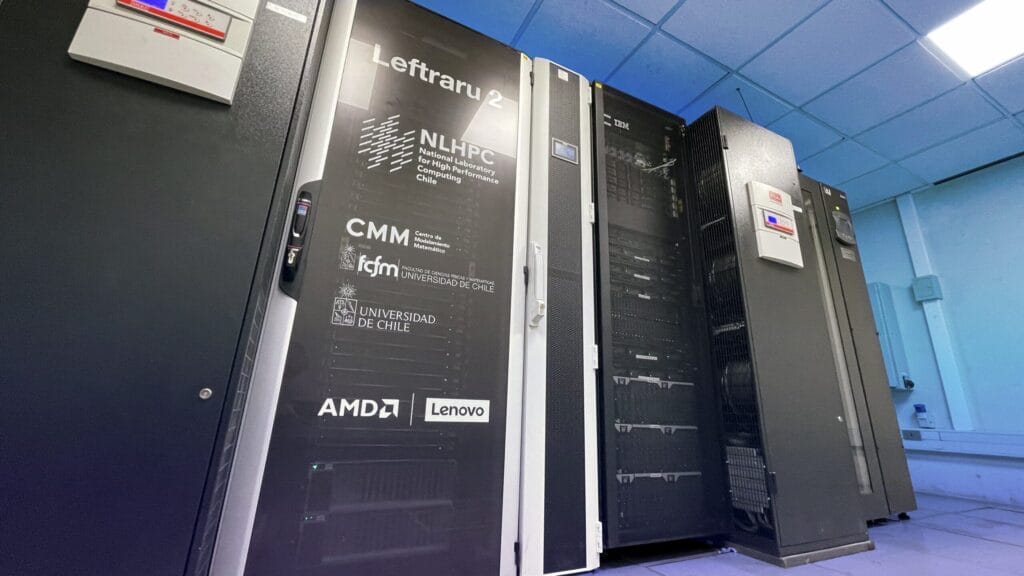Chile has taken a big leap in the field of supercomputing with the recent addition of Leftraru Epu, a new supercomputer that quadruples the processing capacity available in the country. This equipment is part of the National Laboratory for High Performance Computing (NLHPC) and is installed at the Center for Mathematical Modeling (CMM), located at the Faculty of Physical and Mathematical Sciences of the University of Chile.
Leftraru Epu, whose name in Mapudungun means “Lautaro 2”, has been developed thanks to a total investment of 1.150 million Chilean pesos. Of this amount, 950 million come from the Major Equipment Fund of the National Agency for Research and Development (ANID) and 200 million from contributions from CMM. This supercomputer stands out for its impressive technical specifications, which include 7,360 computing cores, 260 teraflops of performance, 12 units of graphics processing (AMD Instinct MI210 GPU), and 24,320 gigabytes of RAM.
A Significant Advancement in Computing
The new supercomputer replaces the original Leftraru and Guacolda, the Dell cluster that is still in operation, to work together. The power of Leftraru Epu is four times greater than that of the previous Leftraru, which represents a significant improvement in the computing capacity available in Chile. However, Ginés Guerrero, director of the NLHPC, emphasizes that, despite this advancement, the country still faces significant challenges in terms of processing capacity demand, especially in fields like artificial intelligence and big data analysis.
“Leftraru 2 is an important milestone for our laboratory, but we must continue to advance to not fall behind globally. Supercomputing infrastructure is crucial to tackle the scientific and technological challenges of the future,” Guerrero commented to the Chilean newspaper El Mercurio.
Energy Efficiency and Open Technology
One of the highlighted features of Leftraru Epu is its energy efficiency. According to Juan Moscoso, AMD’s Data Centers and Cloud manager for South America, the new technology has doubled energy efficiency compared to the previous one, allowing for more data processing with significantly reduced energy consumption. This improvement in energy efficiency is complemented by a computing capacity four times greater, optimizing the processing of complex and voluminous data.
In addition, the supercomputer employs open-source technology, fostering collaboration and innovation. Nicolás Cánovas, AMD’s General Director for Latin America, pointed out that this openness allows developers to contribute and enhance the software, democratizing access to these advanced computing capabilities.
Challenges in Implementation
The implementation of Leftraru Epu has also presented significant technical challenges. Mario Gutiérrez, general manager of Emtec Chile, highlighted that one of the main challenges was integrating the new supercomputer with the existing cluster and cooling system, which requires more than 100 liters of water per minute at a temperature of 10 degrees Celsius to maintain operational efficiency.
Christian Young, general manager of the ISG area of Lenovo for Argentina and Chile, emphasized that the choice of Lenovo and AMD for the development of the supercomputer was based on the need to offer high levels of performance and reliability, necessary for success in high-performance computing in Latin America.
In summary, Leftraru Epu marks a significant advancement in Chile’s computing capacity and underscores the country’s commitment to developing cutting-edge technologies. With its impressive processing capacity and improvements in energy efficiency, this supercomputer is poised to address the scientific and technological challenges of the present and the future, solidifying Chile as a key player in the field of supercomputing in the region.

